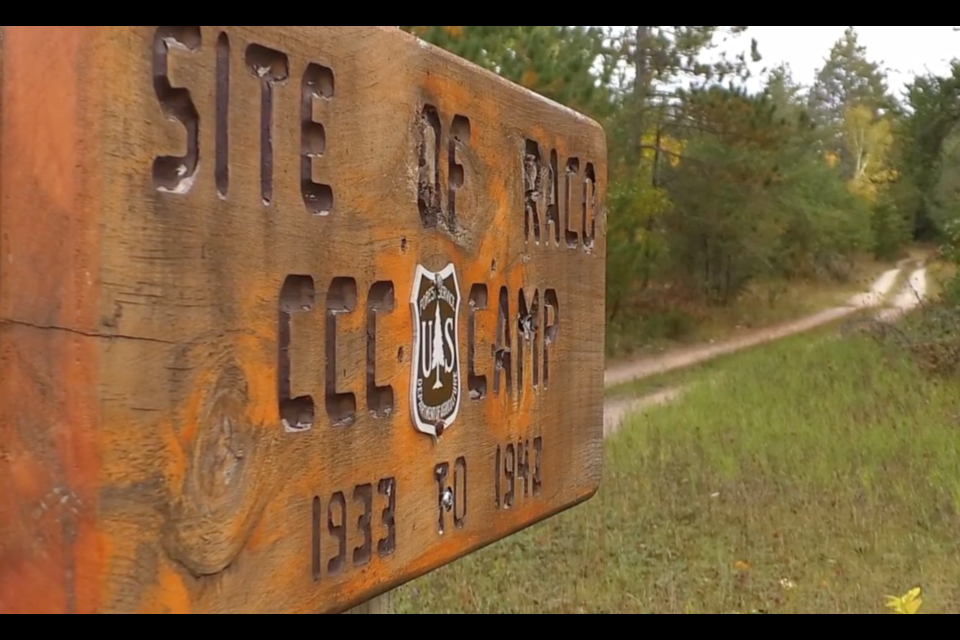South of M-28 at the Ranger Road intersection, just west of Raco in Chippewa County, there is a little-known area of land with a rich history.
As you slowly drive down the two-track off M-28, you will find some interesting things about this land.
Originally known as the Lone Pine Camp, Camp Raco was the first Civilian Conservation Camp (CCC) in the Upper Peninsula.
The Camp was created in 1933 by President Roosevelt's New Deal Plan. It was home to Company 667 which was organized in April 1933 with 200 enrollees from Detroit and Hamtramck.
Official designation as Camp Race F5 occurred in the summer of 1933, work by enrollees at Camp Raco included tree planting, track and trail construction, telephone construction, stream improvement, campground construction, fish-planting and fire pre-suppression.
By 1942, when Raco was the only camp left in the district, its fire protection area covered 151,000 acres (236 square miles).
Soon after, the CCC was phased out with America's entry into the second world war.
However, Camp Raco was converted into a POW camp for over 250 German prisoners of war who were captured in North Africa during the war.
World War II created a huge labor shortage in the U.S. due to the draft. One solution was to use POW labor in the agriculture and forestry fields.
About sixty percent of the POWs in Michigan were contracted out to work on farms picking fruit and other crops.
POWs also cut pulp wood in the forests of the Upper Peninsula, earning eighty cents per day.
By all accounts, the prisoners were respectful and well-behaved. There were very few escape attempts reported.
The American Red Cross inspected the camps to monitor conditions, but there were few complaints, as the German POWs had heard rumours of the horrible conditions in Russian POW camps.
After the war, the buildings were removed and only the foundations and a chimney remain.
One modern piece of equipment is located on this historic site. A United States Geological Survey (USGS) observation well.
If you decide to visit Camp Raco, drive slowly down the two tracks, walk around and explore. You might find something that was part of history all in a very small place called Raco.
Thanks to the Chippewa County Historical Society for access to their incredible amount of information and pictures about the CCC and Camp Raco.



